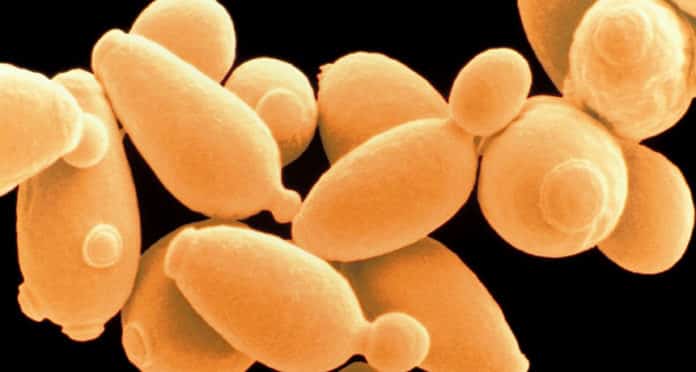Study Finds Yeast Genome Evolution through Sequencing
Since their origin of an alpha-proteobacterial endosymbiont, mitochondrial genomes (mitogenomes) have undergone substantial reduction in gene content, but adopted radically different shapes and sizes with highly variable intronic and intergenic sequences.
Studies on these radically different mitogenomes are important for mitochondrial genetics and evolutionary biology, but also important for the understanding of mitochondrial DNA mutation and maintenance, which are crucial in areas such as pathogenicity, ageing, and diseases.
The budding yeast S. cerevisiae is a powerful model system for understanding eukaryotic biology at the cellular, molecular and genomic levels. S. cerevisiae has recently emerged as a model in population genomics, because it can be found worldwide in a broad array of human-associated (for example, wine, sake, beer and other fermented beverages) and wild (for example, plant, soil and insect) biotopes.
However, the number of available sequenced genomes from natural isolates remains limited and stands in contrast to the wealth of data on Arabidopsis thaliana and humans; this small sample size for yeast genomes has not fully captured the global evolutionary processes relevant to the species.
Now, researchers, in order to better understand them sequenced over 1,000 yeast genomes, ranging from the usual sources such as baker’s or brewer’s yeast to those found in sewage, oil-contaminated asphalt, termite mounds, sea water, one infected nail from a 4-year-old Australian girl.
Taking a genomic global survey of yeast allowed the researchers to create a map of the evolution of the fungus. The work consisted of performing whole-genome sequencing on 1,011 samples of yeast which yielded 1,625,809 high-quality reference-based SNPs.
The researchers report that theories of an out-of-China migration of the yeast appears to be true. They also found that yeast has undergone extensive change due to human intervention related to fermentation for making beer, wine and sake. They noted also that the number of chromosome sets (ploidy) in the yeast cells had an impact on fitness across all of those species tested.
In order to trace the origins of variable ORFs, the team inspected the evolution of each individual ORF. Defining 1,380 ancestral segregating ORFs with sequencing-similarity levels, the researchers identified 913 introgressed ORFs linked to a Saccharomyces paradoxus origin. In addition, they saw that 183 ORFS were likely caused by horizontal gene transfer in highly divergent yeast species, but were restricted to species present in domestic fermentative environments.
While domesticated isolates exhibited high variation in ploidy, aneuploidy, and genome content, the researchers believe that genome evolution in wild isolates occurred through addition of single nucleotide polymorphisms.
The researchers found that among the 1,011 genomes, there was higher SNP density and lower genome content frequency in wild versus domesticated clades. The largest numbers of variants identified by genome-wide association included copy-number changes, which have a greater effect on phenotype than SNPs.
The team noted that the study has established the foundation for genome-wide association studies in S. cerevisiae. In addition, the study revealed a previously undescribed evolutionary history as well as the driving forces of genome evolution for the yeast species. They believe that the collection of genetic and phenotypic variants will guide future population genomics and genotype-phenotype studies.






























